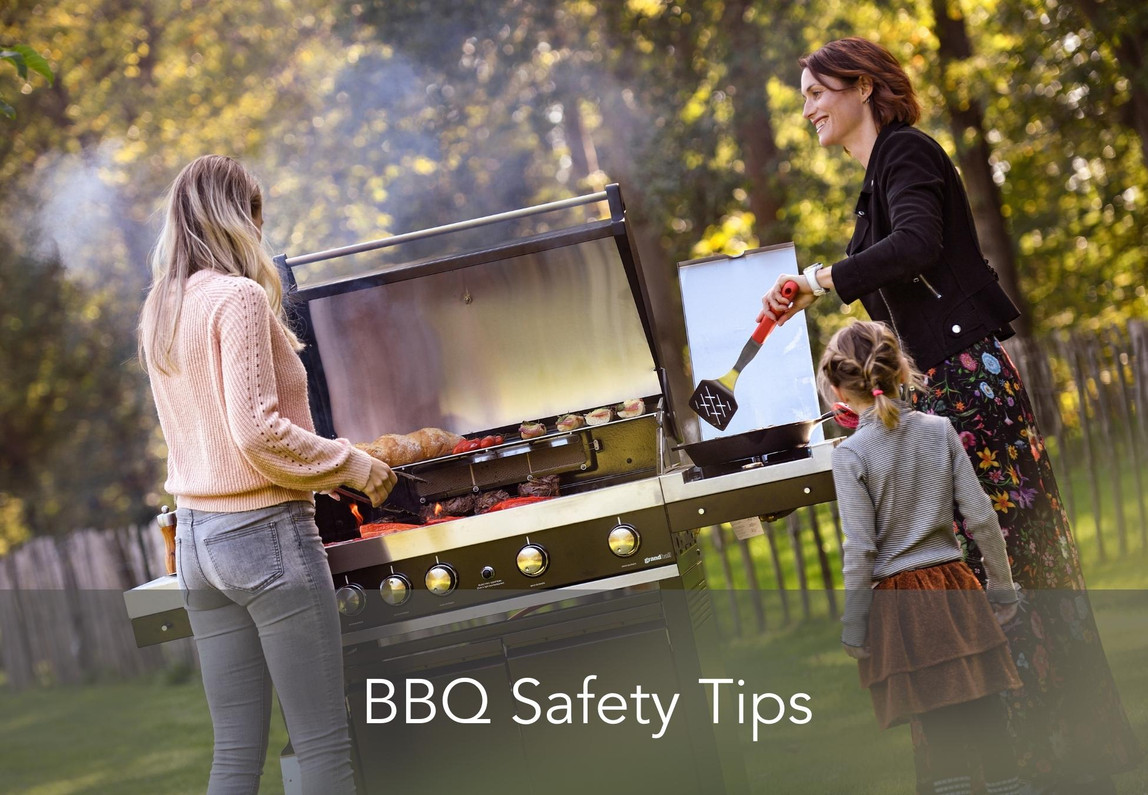BBQ Safety Tips
Grilling is a common way for people to make the most out of the nice weather, and a good way to spend quality time with friends and family. Nevertheless, grilling can be quite dangerous and it is important that you keep your home safe by following our grill safety tips. If you don't have that summer BBQ make sure to check out our full range of Outdoor Living options.
Temperature Check
The temperature of your barbeque depends on what you are cooking. If you’re looking to roast food, 180°-230°C is a suitable temperature. Higher temperatures are needed for searing steaks though. For this, the recommended temperature is 230°C-290°C.
The appearance of the meat can help you judge how well it is cooked. There is always a risk that comes with eating rare food. Burgers and steaks normally take about 10-15 minutes to cook and should be turned during this time. Both sides should be brown. Sausages, hotdogs and pork chops take around 20 minutes and should be rotated slightly every 5 mins so that each side is cooked. Like the burgers, these should also turn a brown colour. The length of time it takes to cook a chicken depends on the size of the chicken and the part you are cooking. An average sized chicken breast will take about 10 minutes and has to be turned halfway through. The chicken should also be browning on the outside and should not be pink when you cut into it.
A way to check if your meat is cooked is to use a barbeque thermometer. These thermometers have a probe spike that is pushed into the thickest area of the meat. If possible, try to avoid fatty areas as these areas heat up faster than the rest of the meat. The centre of the meat should be around 75°C.
After you are finished with the barbeque, make sure that it is cool before you try to move it. You don’t want to ruin your perfect evening with a trip to A&E and some bad burns.

Storage
Defrost any frozen food overnight if possible. This is best done in a fridge as the temperature is warm enough to defrost your food, but the colder temperature reduces the growth rate of bacteria. The ideal fridge temperature should be about 5°C. If you are in a rush, you can use a microwave to defrost food.
When you ae storing food in preparation, store raw and cooked food separately. This will reduce the risk of cross-contamination and food poisoning. If you have prepared food in advance, keep it refrigerated to prevent it from spoiling.
Preparation
Similar to the storage advice, it is important to handle raw and cooked food separately. Use clean chopping boards and utensils when preparing different types of food. This will prevent the bacteria from the raw food from contaminating the cooked food.

Environment
Make sure that your barbeque is on a flat surface and that there are no bushes or flammable objects nearby. It is recommended to have a bucket of water nearby, just in case there is an emergency. You can never be too prepared when if comes to safety. The barbeque should never be unattended. Keep children and pets away from the cooking area. You don’t want them knocking anything over and injuring themselves or someone else.
So there you have it! These tips will not take too much time or effort for you to go over, but they will ensure that you have a safe and wonderful time. Happy cooking! Don't miss out on subscribing to our email newsletter if you would like to receive Appliances Delivered content and product updates. You can also follow us on Facebook and Instagram where we post recipes,offers and much more!
Recent Posts
-
Why do I need an Outdoor Kitchen?
Outdoor kitchens have transformed from a luxury addition to a sought-after feature in homes across I …30th May 2024 -
Choosing the Perfect Washing Machine for Your Home
Choosing the right washing machine Ireland for your home is crucial to optimizing your laundry routi …21st May 2024 -
Revolutionise Your Haircare Routine with the Shark Hair Dryer
Your haircare routine deserves a boost with the innovative Shark Hair Dryer, designed to elevate you …17th May 2024









